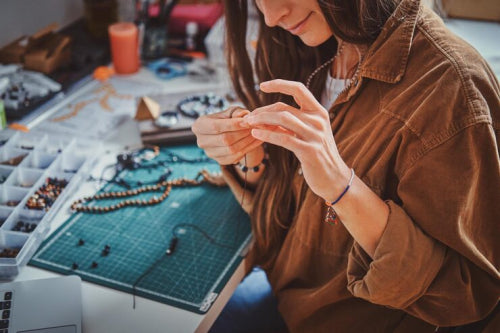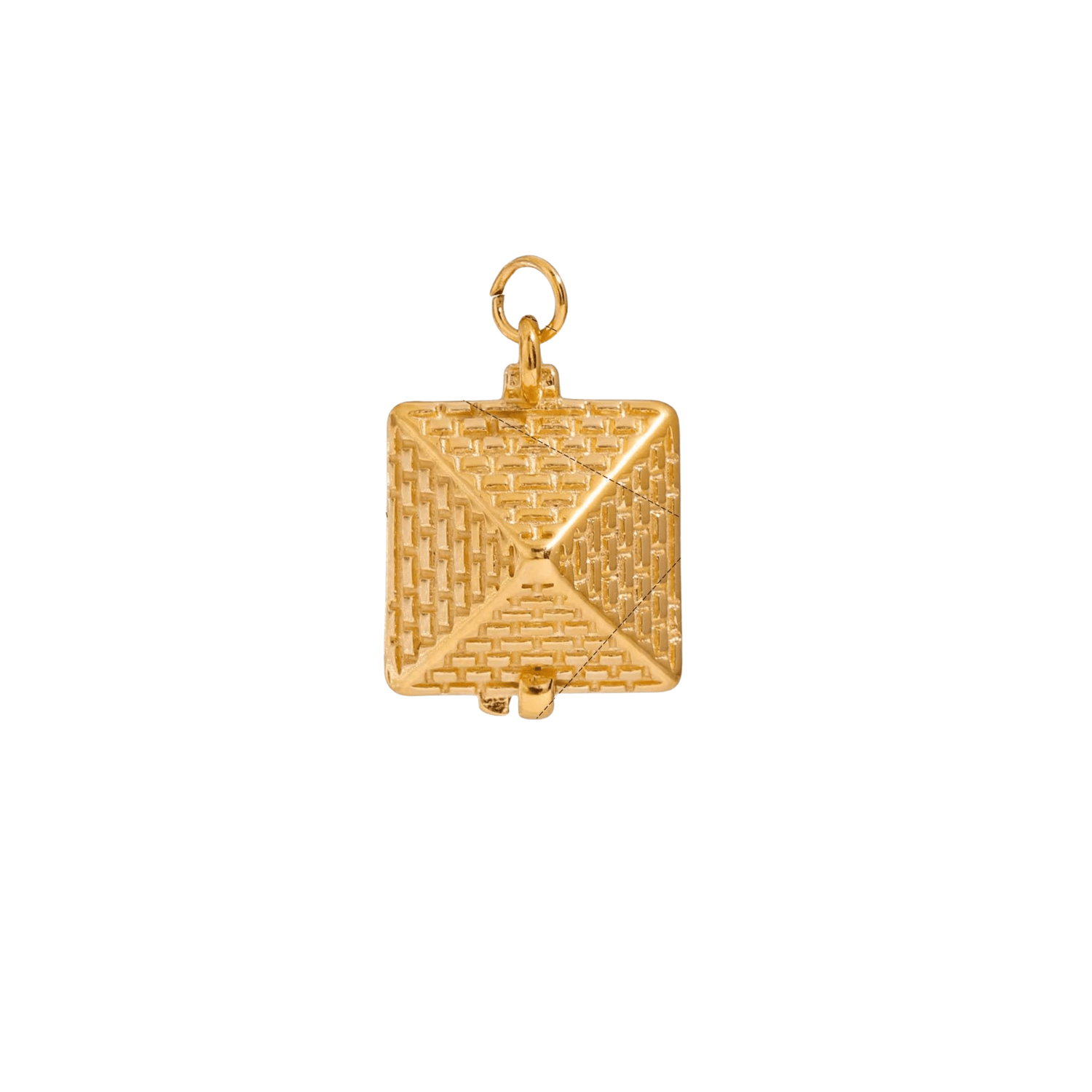
Craft and Community Intersect in Jewelry Firms
Share
Quick Listen:
In the hushed glow of a contemporary atelier, voices blend seamlessly with the rhythmic tap of hammers on metal and the sparkle of freshly cut gems. A cluster of patrons isn't merely browsing; they're actively participating sketching ideas, exchanging anecdotes, and collaborating with skilled craftspeople to bring unique visions to fruition. This vivid tableau isn't a relic of history but a snapshot of today's premium jewelry landscape, where the artistry of creation intertwines with communal bonds to craft a fresh paradigm of opulence. With the global jewelry market estimated at USD 366.79 billion in 2024 and anticipated to expand to USD 578.45 billion by 2033 at a 5.3% CAGR, the sector is evolving beyond mere aesthetics, emphasizing the profound ties that bind creators and wearers alike.
Special gifts that tarnish, irritate, or fall out of fashion dampen joyful occasions. That disappointment clouds memories meant to endure. Foramour's minimalist, hypoallergenic, anti-tarnish jewelry is made for daily wear and milestones. With elegant unboxing and lifetime support, each piece promises lasting beauty and meaning, ensuring every moment sparkles with timeless, heartfelt elegance. Shop Now!
The Interplay of Artistry and Affiliation
Jewelry transcends simple decoration; it serves as a repository for narratives, embodying emotions, social standing, or ancestral legacies. In the current era, upscale jewelry enterprises are elevating this concept by embedding communal elements directly into their creative ethos. The era of aloof elitism in luxury has faded. Instead, companies are welcoming clientele into the fold, organizing sessions where aficionados draft concepts beside seasoned goldsmiths or partake in online collaborative forums via channels such as Instagram. Far from superficial tactics, these initiatives reflect a broader societal evolution. Patrons, particularly the youth, yearn for genuine bonds and significance, prompting jewelry houses to adapt accordingly.
Empirical evidence supports this trajectory. The Asia Pacific area, holding a dominant 60.2% market share in 2024, spearheads this momentum, propelled by escalating desires for opulent, tailored items. Concurrently, North America's jewelry sector is forecasted to advance at an 8.4% CAGR, bolstered by enthusiasm for custom embellishments. Within segments, rings driven by robust interest in betrothal and matrimonial bands captured roughly 31% of earnings in 2024, whereas gold, esteemed for its societal importance and asset allure, commanded about 60% of the revenue. This expansion extends beyond transactions; it signifies profound involvement with the artisanal process and the networks that nurture it.
Delving deeper, the global jewelry market size stood at USD 232.94 billion in 2024, set to rise from USD 242.79 billion in 2025 to USD 343.90 billion by 2032, reflecting a 5.10% CAGR over the forecast span. This surge aligns with heightened jewel uptake, as individuals increasingly favor sumptuous goods that accentuate bodily traits, display vogue inclinations, and amplify appearances. In parallel, another analysis pegs the market at USD 269.80 billion in 2024, eyeing an 8.7% CAGR through 2034, fueled by alliances among industry titans, a burgeoning preference for intercultural motifs, and the embrace of online shopping for adornments.
Bridging Workshops and Patrons
Step into a high-end jewelry emporium now, and you could encounter yourself enjoying a beverage at a temporary showcase, observing a craftsperson forge a metallic loop or discussing moral procurement with a stylist. Such patron-focused setups transient displays, exclusive viewings, and hands-on seminars are revolutionizing commerce. A certain label lately arranged multiple face-to-face crafting gatherings, enabling patrons to team up with regional experts in fashioning bespoke items that merge age-old methods with individual touches. Yet another initiated a social media drive on TikTok, soliciting audience input on crystal facets for a restricted series, transforming idle observers into engaged participants.
Electronic avenues are magnifying this movement. Online networks function not solely as sales venues but as communal nuclei, where enterprises divulge insider views of their studios or feature creators from marginalized areas. These endeavors strike a chord profoundly, notably with younger demographics who favor entities with intent. The uptick in digital trade, as documented in a 2024 study, facilitates direct patron-brand interactions, although approximately 63% of transactions persist through traditional outlets where tangible assessment prevails. This amalgamated approach fusing virtual rapport with sensory encounters emerges as a triumphant strategy.
Moreover, in the United States, the jewelry arena was appraised at USD 75.75 billion in 2024, poised to ascend to USD 96.61 billion by 2030 at a 4.1% CAGR. This constitutes a notable slice of the worldwide scene, with rings claiming 42.95% of income in 2023 and diamonds leading at 62.86%. Offline avenues dominated with 84% in 2023, yet digital pathways are slated for substantial expansion, mirroring the hybrid trend.
Navigating Hurdles in Prestige and Openness
Nevertheless, this transformation presents obstacles. Opulence flourishes on rarity, yet broadening access to collectives threatens to erode a label's allure. How does one preserve an aura of distinction while extending invitations universally? Certain enterprises grapple with this equilibrium, apprehensive that widespread involvement could diminish their stature. Logistical chains pose significant concerns too. Heightened patron consciousness stimulated by calls for moral procurement and eco-friendliness compels brands to guarantee responsible material origins without hindering expansion.
The worldwide adornment sphere, valued at USD 353.27 billion in 2024 and expected to attain USD 514.04 billion by 2031 with a 4.8% CAGR, faces intense examination to fulfill these commitments. Jewelry encompasses decorative artifacts for self-embellishment, fashioned from noble metals, jewels, and modern substitutes like earthenware and synthetics. It bears societal, emotional, and visual worth, frequently denoting affluence, rank, or milestones such as unions and commencements. Encompassing articles like bands, chains, armlets, and lobes, each augments visage and conveys persona. The field is broadening via ethical origins, durability, and personalization.
Additionally, the peril of disingenuousness lingers. Patron-oriented drives may falter if perceived as superficial or, graver, deceptive eco-claims. An entity proclaiming virtuous methods sans verifiable procurement paths hazards eroding confidence. The imperative is evident: communal and artisanal pursuits must be authentic, not mere slogans appended to promotional efforts.
Prospects That Gleam Brightly
Notwithstanding these impediments, the prospects dazzle. Through nurturing sincere linkages, labels cultivate devotion surpassing mere exchanges. Consider the niche adornment maker who allied with native craftspeople to devise a lineup drawn from their heritage tales. Every artifact bore a chronicle, disseminated through a proprietary allegiance group, instilling proprietorship among buyers. Such ventures transcend sentimentality; they're astute commerce. Immersive merchandising envision styling seminars or elite-only previews unveils fresh income avenues while distinguishing labels amid competition.
Statistics reinforce this promise. Strategic partnerships and intercultural aesthetics stand as pivotal catalysts for sector advancement. Entities embracing these currents wedding legacy expertise with contemporary tales transcend vending trinkets; they vend inclusion. This echoes strongly with emerging patrons, who regard adornments as manifestations of uniqueness and principles, beyond mere riches. Further, escalating expendable earnings, shifting style currents, and mounting calls for deluxe and bespoke accoutrements propel expansion, alongside amplified focus on durability and moral origins.
In North America, burgeoning fascination with upscale commodities and individualized ornaments underpins the projected 8.4% CAGR. Globally, the diamond segment is foreseen to progress at 5.3% CAGR from 2025 to 2033, while online outlets anticipate 7.9% growth, underscoring the digital pivot. Women's category led with 71.7% in 2024, yet men's is expected at 4.6% CAGR, indicating broadening appeal.
A Horizon Shaped by Expertise and Unity
As conventional opulence wanes, a novel epoch emerges one wherein upscale jewelry enterprises prioritize fellowship as much as karats. Sector prognosticators envision forthcoming blended commerce frameworks, with workshops serving as innovation centers, cyber forums nurturing international collectives, and enveloping encounters converting patrons into partners. The figures narrate an enthralling tale: a domain primed for augmentation, steered by buyers esteeming veracity, mastery, and rapport. For jewelry ventures, the trajectory is unmistakable merge the perennial craft of creation with the innate human quest for togetherness, and you forge not merely ornaments, but enduring instances that resonate eternally.
Frequently Asked Questions
How is the luxury jewelry market changing to include community engagement?
The luxury jewelry market is transforming from exclusive, aloof business models to community-focused approaches where customers actively participate in the creative process. Premium jewelry companies now organize hands-on crafting sessions, collaborative design workshops, and social media campaigns that turn customers into engaged participants rather than passive buyers. This shift reflects broader societal changes, particularly among younger consumers who seek authentic connections and meaningful experiences beyond traditional luxury transactions.
What role do online platforms play in modern jewelry brand community building?
Online platforms have become essential community hubs where jewelry brands share behind-the-scenes studio content, feature creators from marginalized communities, and facilitate direct customer-brand interactions. While approximately 63% of jewelry transactions still occur through traditional retail channels, digital pathways are experiencing substantial growth and serve as vital spaces for building authentic relationships. Brands use platforms like TikTok and Instagram not just for sales, but to create collaborative forums where customers can influence design decisions and participate in the creative process.
What challenges do luxury jewelry brands face when balancing exclusivity with community accessibility?
Luxury jewelry brands must navigate the delicate balance between maintaining their exclusive appeal and opening their doors to broader communities. The main challenge lies in preserving brand prestige while extending universal invitations to participate in the creative process. Additionally, brands face logistical concerns around ethical sourcing and sustainability as heightened customer consciousness demands responsible material origins without hindering business expansion. The risk of appearing inauthentic is also significant - community-focused initiatives can backfire if perceived as superficial marketing tactics rather than genuine efforts to build meaningful connections.
Disclaimer: The above helpful resources content contains personal opinions and experiences. The information provided is for general knowledge and does not constitute professional advice.
You may also be interested in: The boss – foramour
Special gifts that tarnish, irritate, or fall out of fashion dampen joyful occasions. That disappointment clouds memories meant to endure. Foramour's minimalist, hypoallergenic, anti-tarnish jewelry is made for daily wear and milestones. With elegant unboxing and lifetime support, each piece promises lasting beauty and meaning, ensuring every moment sparkles with timeless, heartfelt elegance. Shop Now!
Powered by flareAI.co

